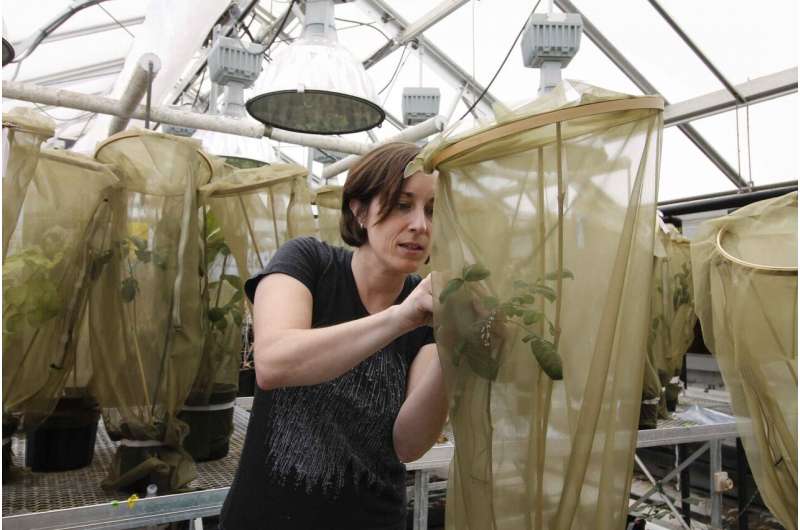Despite temperature shifts, treehoppers manage to mate

During the mating season, male treehoppers—small plant feeding insects—serenade potential mates with vibrational songs sent through plant stems. If a female treehopper's interest is sparked, a male-female duet ensues until mating occurs.
Scientists know that there is a thermal window when the half-centimeter-long insects are active and temperature shifts can throw this delicate coordination off. For example, the songs produced by males to attract mates vary with temperature. At some temperatures, male treehoppers can even sound like different species, potentially confusing females, as female treehoppers use these songs to pick a good mate.
A Saint Louis University research team wanted to know if temperature variation, which is increasing with global warming, could have a disruptive effect on the insects' reproduction.
To find out, the team studied how temperature variation affects male vibrational songs and female preferences for these songs in an experiment recently published in The Journal of Evolutionary Biology.
Led by Kasey Fowler-Finn, Ph.D., assistant professor of biology at Saint Louis University, the team tested four groups of Enchenopa binotata treehoppers, each from a different location. They measured the frequency (i.e. pitch) of male vibrational songs and the frequency most preferred by females across a range of temperatures from 18 to 36 degrees Celsius.
The results showed a strong temperature effect on both male signals and female preferences with changes in male signals across temperatures being matched by similar changes in the songs that females prefer. Because the male and female insects responded to temperature shifts together, changes in temperature did not significantly influence predicted patterns of female mate choice. Thus, it seems unlikely that thermal sensitivity in male songs will disrupt mating as temperatures shift.
Fowler-Finn is encouraged by the treehoppers' resilience.
"At a time when we are increasingly concerned about how global warming will influence animals, these findings provide some hope that treehoppers will persist in the face of change."
In addition to their research on global warming's potential impact to insects and ecosystems, the study team also is partnering with the Saint Louis University Museum of Art (SLUMA) to help educate the public about the vital role and fascinating attributes of vibrationally singing insects through a sound installation exhibit open to the public that will open October 25.
More information: Dowen Mae I. Jocson et al, Temperature coupling of mate attraction signals and female mate preferences in four populations of Enchenopa treehopper (Hemiptera: Membracidae), Journal of Evolutionary Biology (2019). DOI: 10.1111/jeb.13506
Journal information: Journal of Evolutionary Biology
Provided by Saint Louis University


















